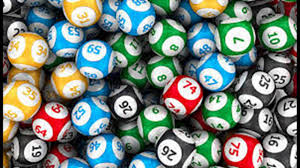UMass Survey Suggests over One-third of Annual Mass Lottery Sales Dependent on At-Risk and Problem Gamblers
In May 2015, UMass-Amherst published a survey that suggests 37% of the Massachusetts State Lottery’s revenue comes from at-risk or problem gamblers.
The survey estimates that 389,121 Massachusetts residents are at-risk gamblers and 86,356 are problem gamblers. At-risk gamblers spend at least $3,869 yearly on the Lottery; the number increases to $5,148 for problem gamblers. Considering the aforementioned population estimates, $1.8 billion of the Lottery’s annual revenue is attributable to these vulnerable constituencies. The survey was conducted from 2013 to 2014, so that $1.8 billion would have made up around 37% of the FY 2014’s $4.9 billion in sales.
Before jumping to conclusions, it’s necessary to acknowledge a few caveats. First, at-risk and problem gambler expenditures are self-reported and may therefore be skewed. Second, the per-person expenditure figures are identified in the survey as unreliable estimates because their standard error is greater than 30%.
However, there is still good reason to believe the survey numbers reflect the truth.
The authors state that “surveys have consistently obtained significant underestimates of actual gambling expenditure” due to the nature of self-reported gambling information. This implies that the estimated portion of Lottery revenue that comes from at-risk and problem gamblers may actually be too low. As for the high standard error, this may come with the territory. Since the estimates are of residents with gambling disorders, it follows that there may be outlying residents who, because of the nature of their disorder, spend extremely large amounts of money on the Lottery, even when compared to others who are at-risk or problem gamblers.
This theory seems to have some validity. Data from the 2016 Massachusetts Lottery Annual Tracking Survey shows that the top 10% of frequent Lottery players (which is around 3.8% of adult Massachusetts residents) spend ~$9,500 yearly on the Lottery. In total, they alone account for 36.9% of the Lottery’s revenue. In other words, according to the Lottery’s own data, there’s a small subgroup of residents who contribute disproportionately to the Lottery’s revenue. It would follow that many in this outlying subgroup are at-risk or problem gamblers, which, in turn, would correspond with the high standard error seen in the UMass survey data.
That being said, there is no way to definitively prove the exact portion of Lottery sales that comes from at-risk and problem gamblers without conducting a targeted survey. But multiple data sources suggest a discomfiting fact: the Massachusetts Lottery may be exploiting residents with gambling disorders to the tune of billions of dollars.



